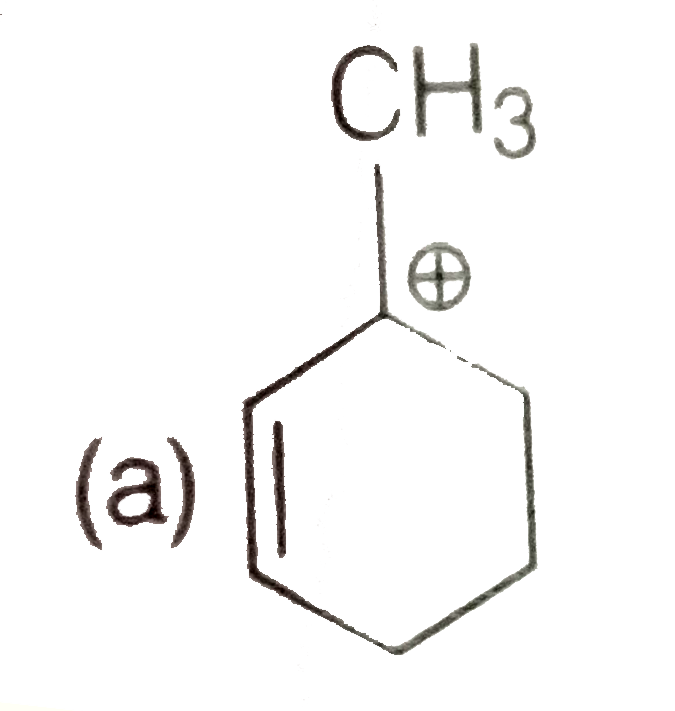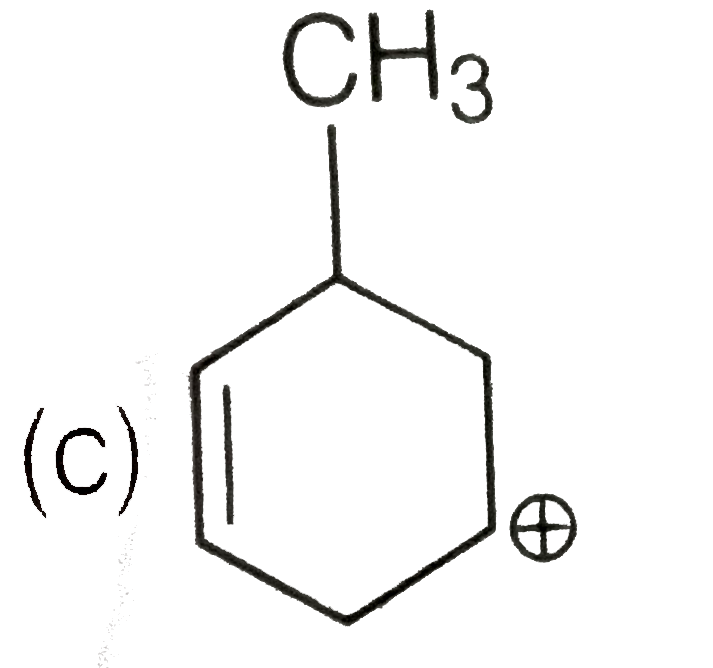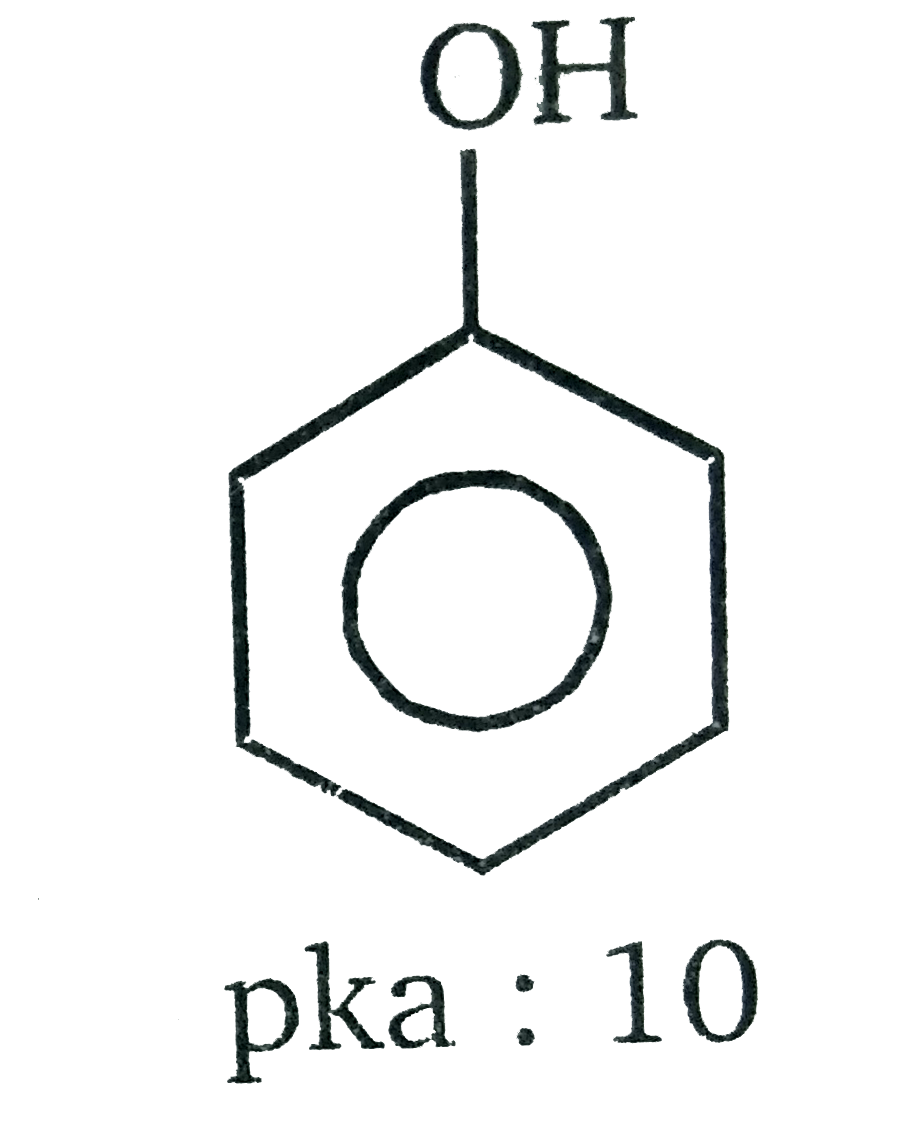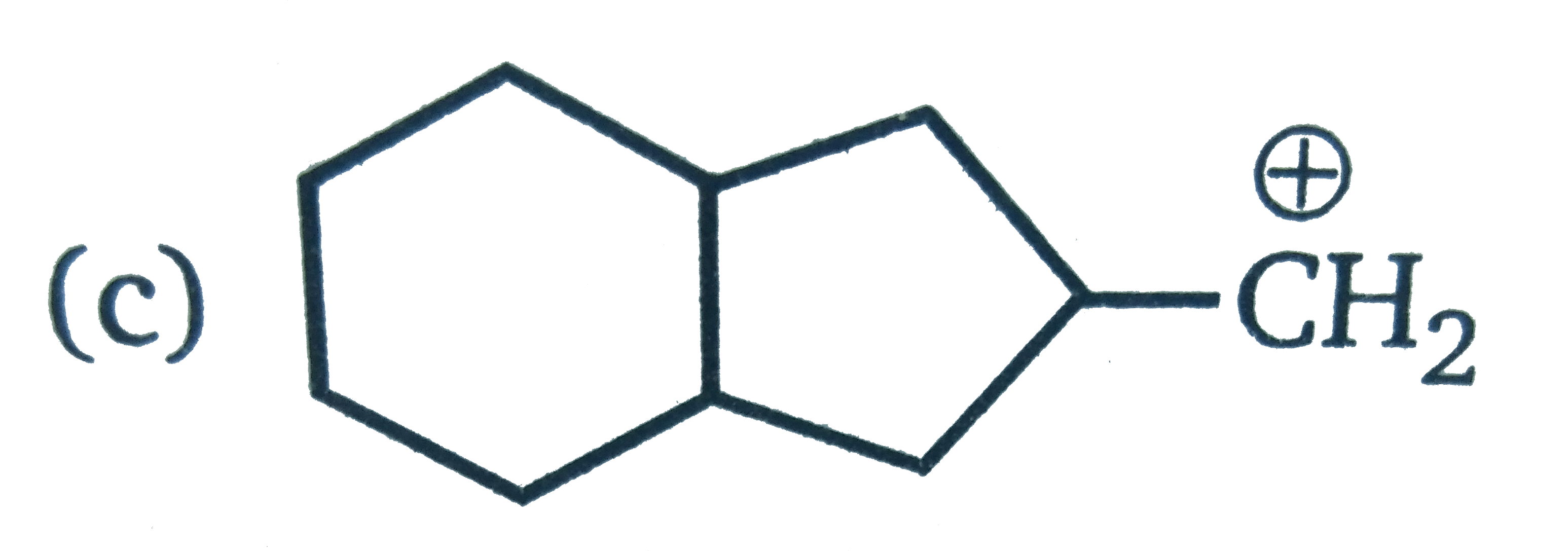Which is the most stable carbocation among the following ?
Iso - butyl cation
Triphenyl methyl cation
Cyclopropyl methyl cation
t-Butyl cation
The correct Answer is:B
To determine which carbocation is the most stable among the given options, we need to analyze each one based on the principles of carbocation stability, which include the effects of resonance and the number of alkyl groups attached to the positively charged carbon.
1. Identify the Carbocations:
- A: Isobutyl cation
- B: Triphenylmethyl cation
- C: Cyclopropyl methyl cation
- D: Tertiary butyl cation
2. Analyze Isobutyl Cation (A):
- The isobutyl cation has one positive charge on a carbon that is attached to two other carbons (alkyl groups). Alkyl groups are electron-donating through hyperconjugation, which provides some stability. However, it lacks resonance.
Hint: Remember that more alkyl groups generally increase stability due to hyperconjugation.
3. Analyze Triphenylmethyl Cation (B):
- The triphenylmethyl cation has a positive charge on a carbon that is bonded to three phenyl (benzene) rings. Each phenyl ring can participate in resonance, allowing for multiple resonance structures. This extensive resonance significantly stabilizes the carbocation.
Hint: Look for the number of resonance structures; more structures typically mean greater stability.
4. Analyze Cyclopropyl Methyl Cation (C):
- The cyclopropyl methyl cation exhibits "dancing resonance," which is a form of stabilization due to the cyclic nature of the cyclopropyl group. However, it does not have as many resonance structures as the triphenylmethyl cation.
Hint: Consider how cyclic structures can stabilize carbocations, but compare the number of resonance forms.
5. Analyze Tertiary Butyl Cation (D):
- The tertiary butyl cation has a positive charge on a carbon that is attached to three other carbon atoms. This configuration allows for hyperconjugation, making it stable, but it lacks resonance.
Hint: Tertiary carbocations are stable due to hyperconjugation, but they may not be as stable as those with resonance.
6. Compare Stability:
- Based on the analysis:
- Triphenylmethyl cation (B) has the most resonance structures and is therefore the most stable.
- Cyclopropyl methyl cation (C) has some stability due to dancing resonance.
- Tertiary butyl cation (D) is stable due to hyperconjugation.
- Isobutyl cation (A) is the least stable due to lack of resonance and fewer alkyl groups.
7. Conclusion:
- The most stable carbocation among the options provided is the Triphenylmethyl cation (B) due to its extensive resonance stabilization.
Final Answer:
The most stable carbocation is B: Triphenylmethyl cation.
- A: Isobutyl cation
- B: Triphenylmethyl cation
- C: Cyclopropyl methyl cation
- D: Tertiary butyl cation
- The isobutyl cation has one positive charge on a carbon that is attached to two other carbons (alkyl groups). Alkyl groups are electron-donating through hyperconjugation, which provides some stability. However, it lacks resonance.
- The triphenylmethyl cation has a positive charge on a carbon that is bonded to three phenyl (benzene) rings. Each phenyl ring can participate in resonance, allowing for multiple resonance structures. This extensive resonance significantly stabilizes the carbocation.
- The cyclopropyl methyl cation exhibits "dancing resonance," which is a form of stabilization due to the cyclic nature of the cyclopropyl group. However, it does not have as many resonance structures as the triphenylmethyl cation.
- The tertiary butyl cation has a positive charge on a carbon that is attached to three other carbon atoms. This configuration allows for hyperconjugation, making it stable, but it lacks resonance.
- Based on the analysis:
- Triphenylmethyl cation (B) has the most resonance structures and is therefore the most stable.
- Cyclopropyl methyl cation (C) has some stability due to dancing resonance.
- Tertiary butyl cation (D) is stable due to hyperconjugation.
- Isobutyl cation (A) is the least stable due to lack of resonance and fewer alkyl groups.
- The most stable carbocation among the options provided is the Triphenylmethyl cation (B) due to its extensive resonance stabilization.
The most stable carbocation is B: Triphenylmethyl cation.
Topper's Solved these Questions
Similar Questions
Knowledge Check
Most stable carbocation among the following is
A B
B C
C DAll of these
DAll of theseThe most stable carbocation among the following is
A B
B C
C D
D
Most stable carbocation among the following is :
A B
B C
C D.⊕CH3
D.⊕CH3
